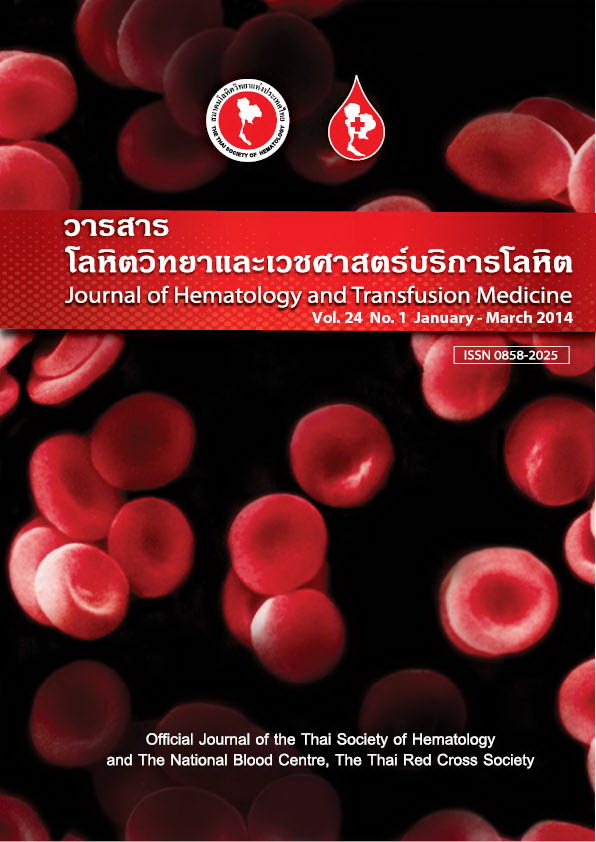Comparison of Microcolumn Agglutination Test for Blood Group Typing and Antibody Screening
Keywords:
ABO grouping, Rh D typing, Antibody screening, Microcolumn agglutination test, Gel test, Glass beadAbstract
Background: The microcolumn agglutination tests (MT) with an automated platform has been recently introduced for pretransfusion tests to replace conventional tube test. Objective: The aim of this study was to compare the sensitivity, specificity, operation time (OT) and cost effectiveness of pretransfusion tests performed by 3 commercially available MT: AutoVue® Innova (AVI), Techno TwinStation (TTs), and WaDiana Compact (WDC) with the conventional tube test (CTT) in order to implement automated MT for routine transfusion laboratory service. Materials and Methods: Samples from donors and patients from the Blood Bank, Department of Pathology, Faculty of Medicine, Ramathibodi Hospital, Mahidol University were tested by all of the 4 methods for pretransfusion tests which include ABO, Rh D typing and antibody screening. The OT for each step of each method were recorded. The direct and labour cost were calculated and compared. Results: The sensitivity of CTT and MT for ABO and Rh D typing were not statistically significant (p > 0.05). Six out of 1,222 samples showed ABO discrepancies by all of the methods. Detection of two cell populations or mixed field reaction was easily observed in all MT cards, while CTT could not detect it without the use of a microscope. The sensitivity of CTT and MT in detecting clinically significant antibodies (7/2,149 samples) were also not statistically significant (p > 0.05). However, 1/7 samples which had anti-E could be detected only by MT. On the contrary, CTT showed higher sensitivity in detecting clinically insignificant antibodies (28/2,149 samples) which reacted only at room temperature. The OT of pretransfusion tests was similar for single samples. However, the OT of MT was faster when a large amount of samples were evaluated in a batch. AVI was the fastest instrument. The direct cost of pretransfusion tests by MT was higher than CTT because of reagent cost, while the labour cost was much cheaper for MT. Conclusion: The sensitivity of CTT, AVI, TTs, and WDC for ABO, Rh D typing, and antibody screening for clinically significant antibodies were not statistically significant difference. CTT had a significantly higher sensitivity than MT in detecting clinically insignificant antibodies. AVI showed higher sensitivity and a false positive rate than those of CTT and TTs. However, AVI had the fastest OT. Therefore, implementation of MT with an automated platform was recommended for transfusion service in order to reduce OT and human errors as well as increase standardization of pretransfusion tests.



